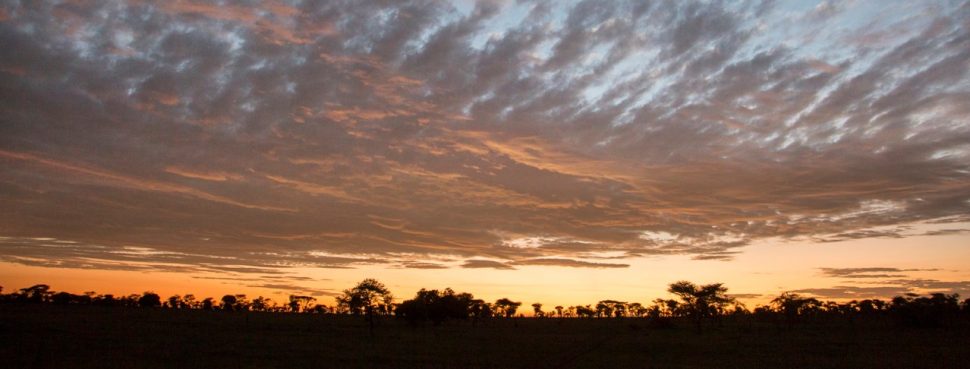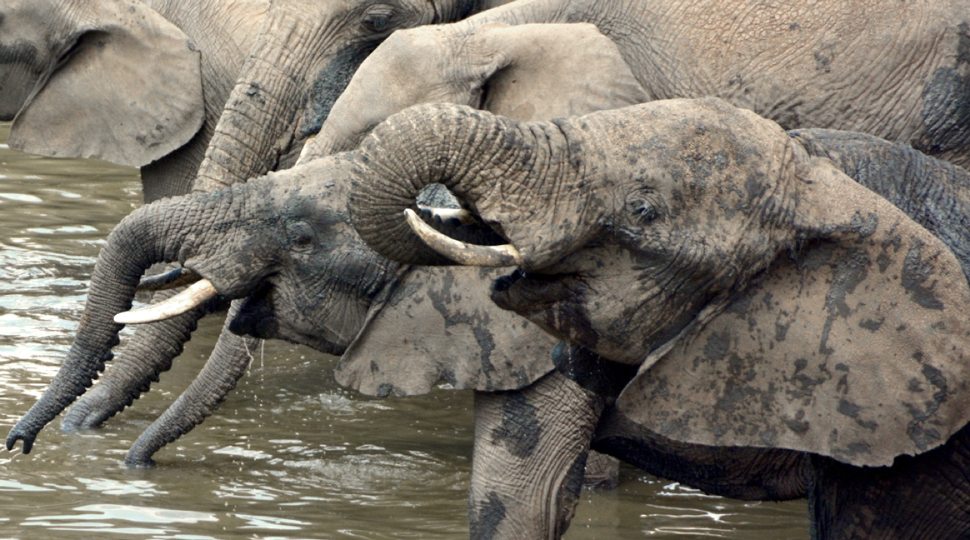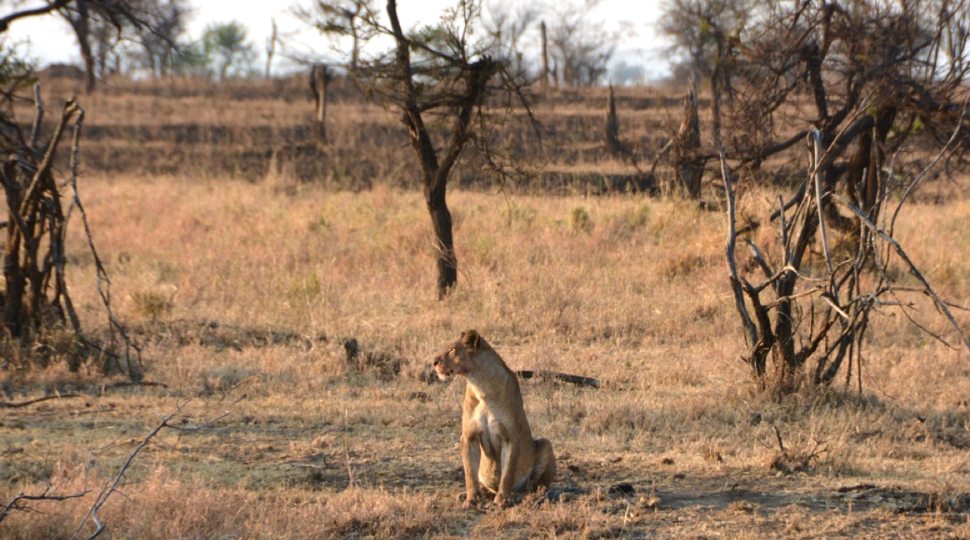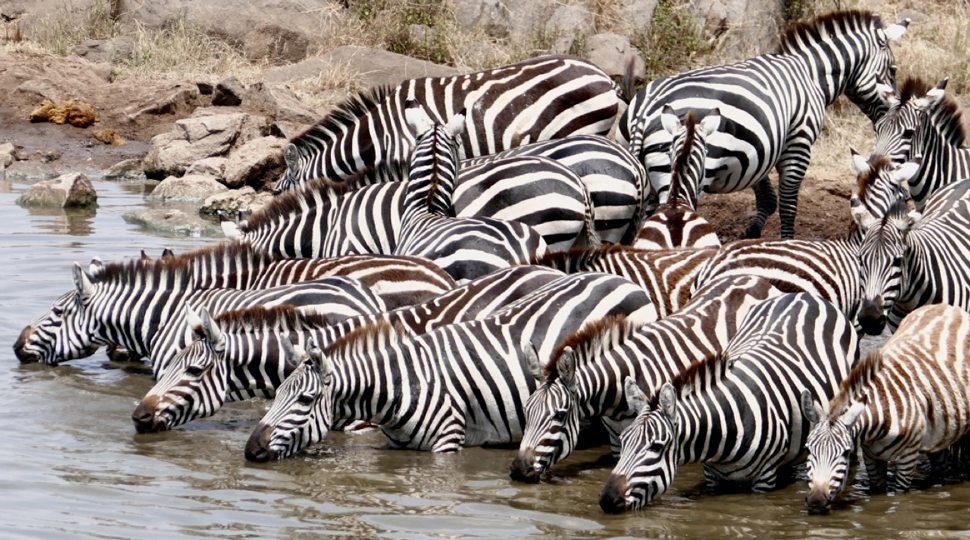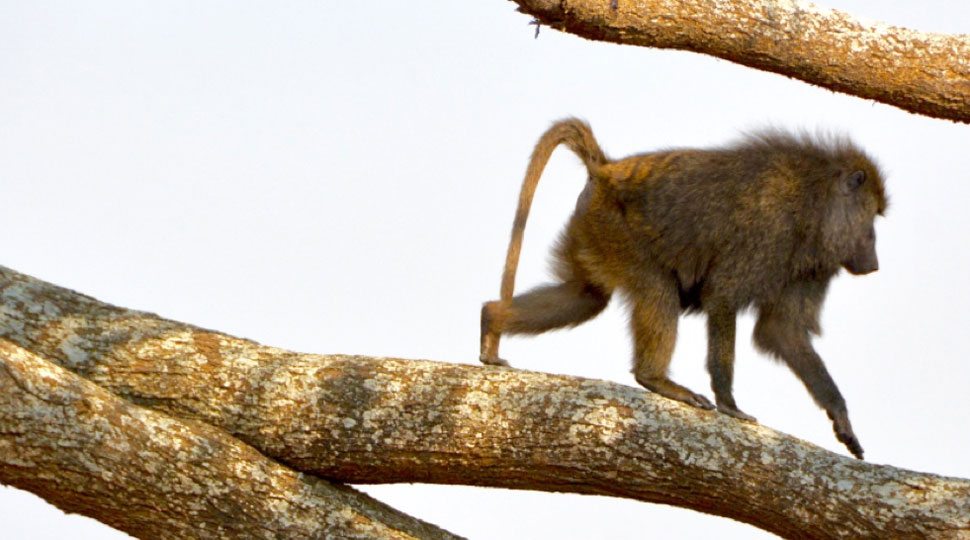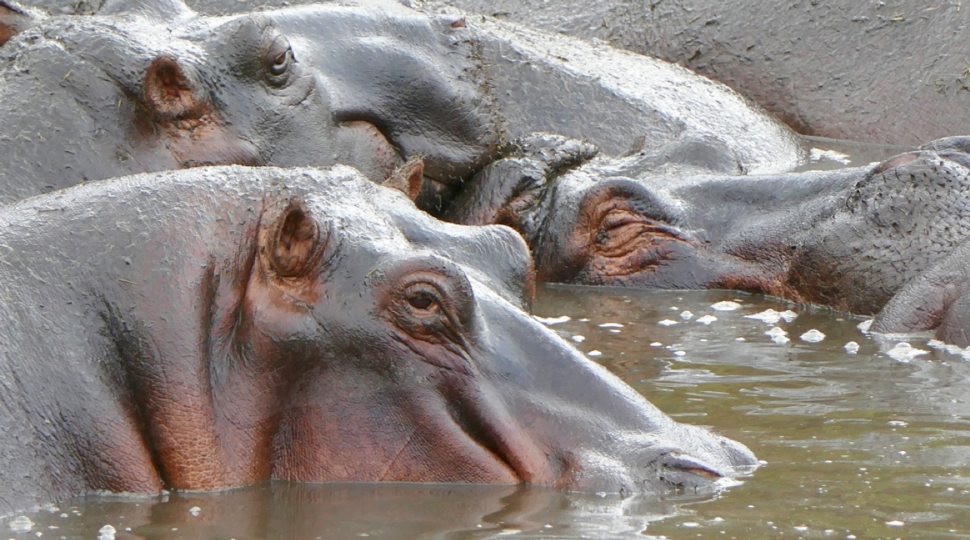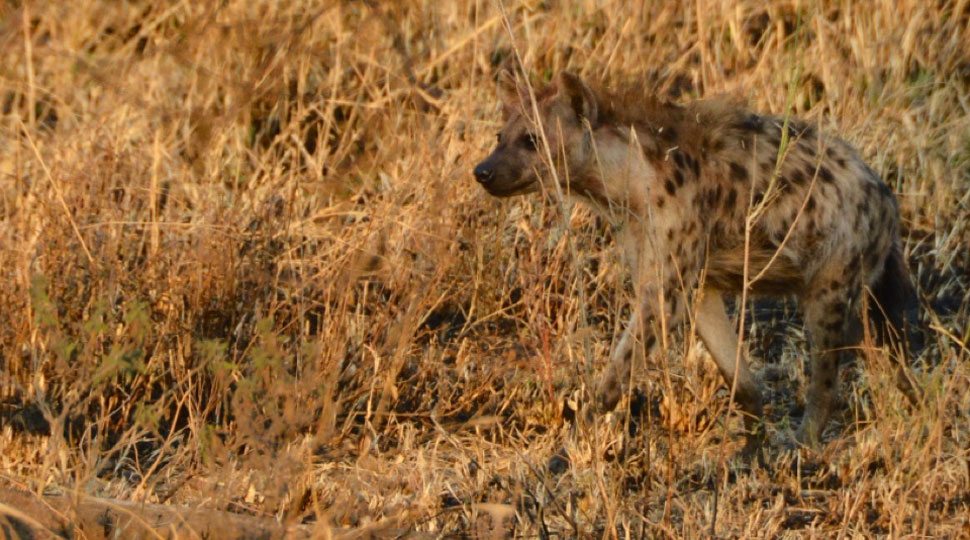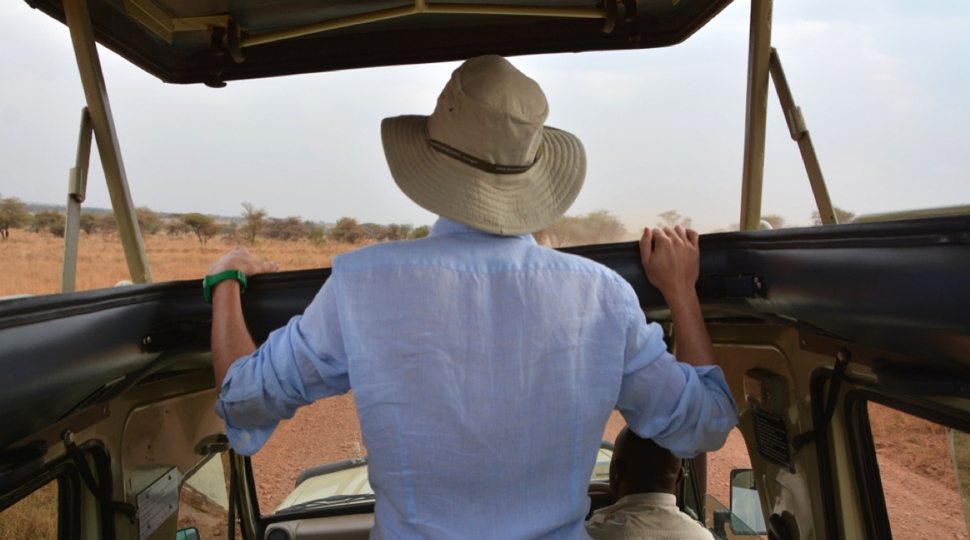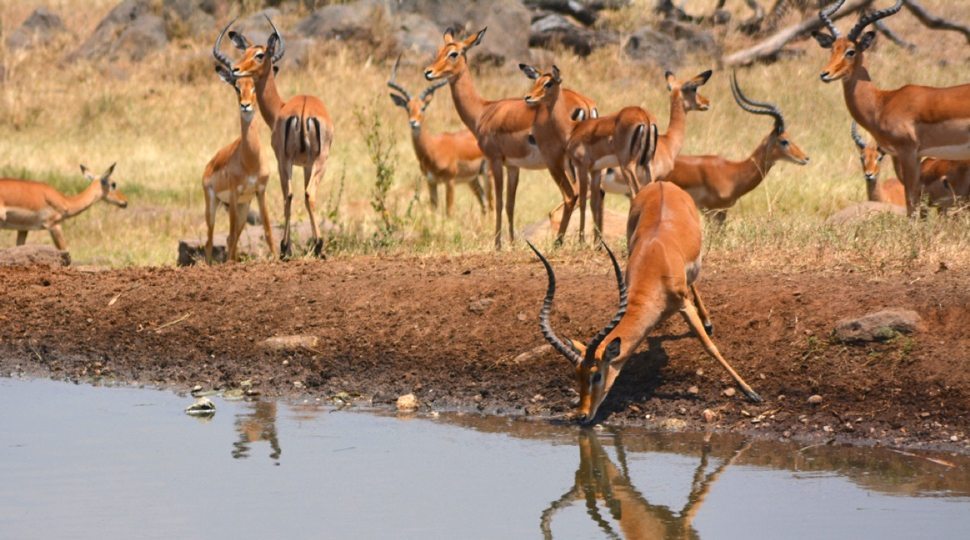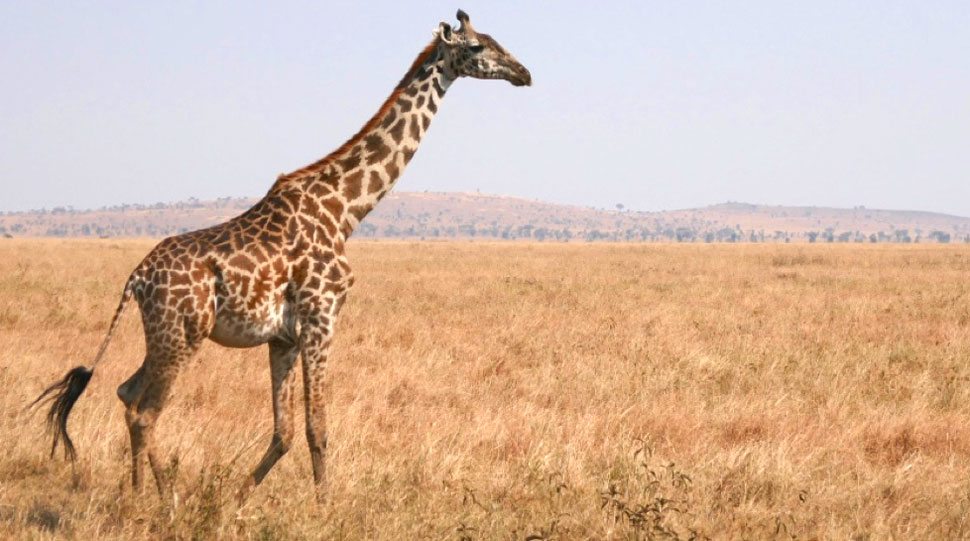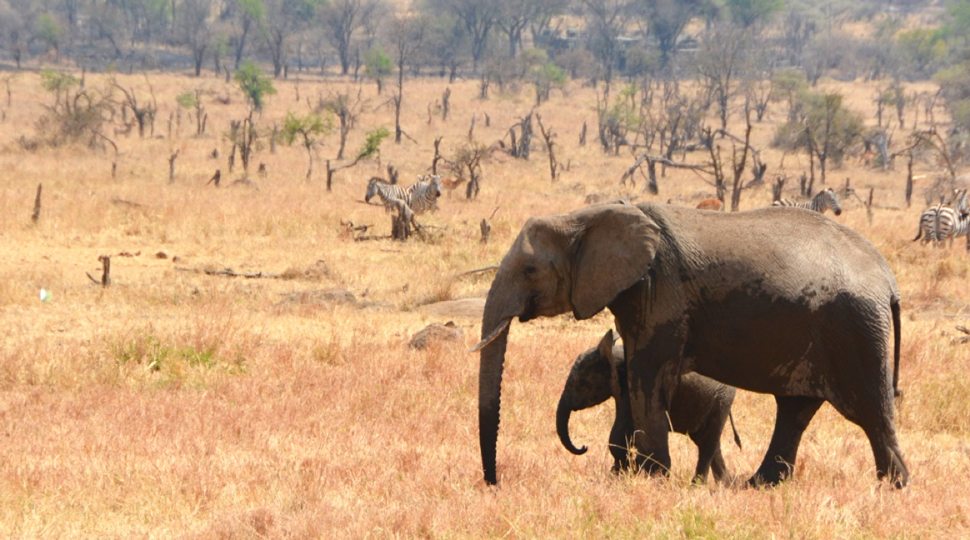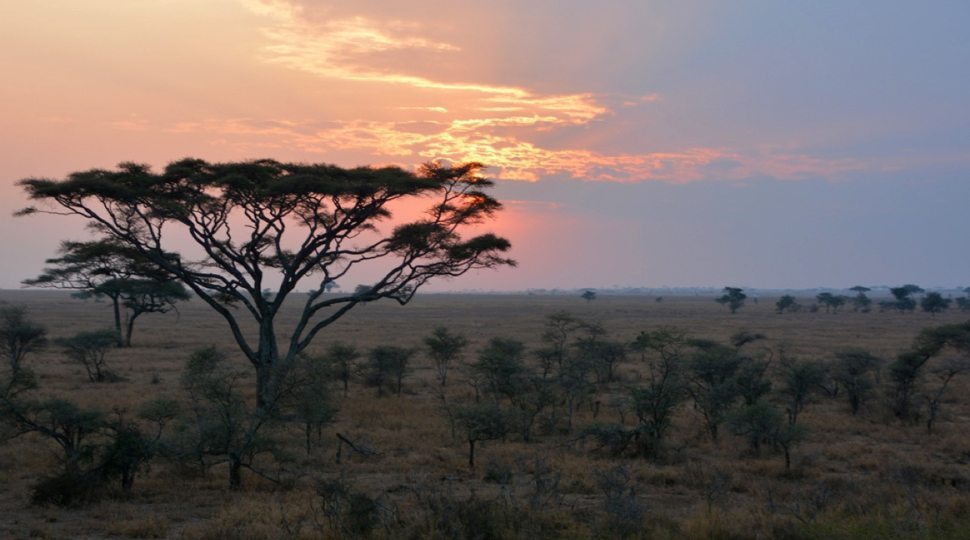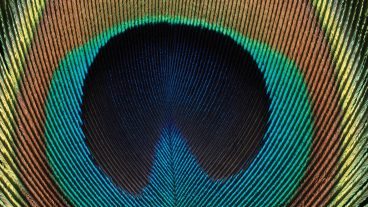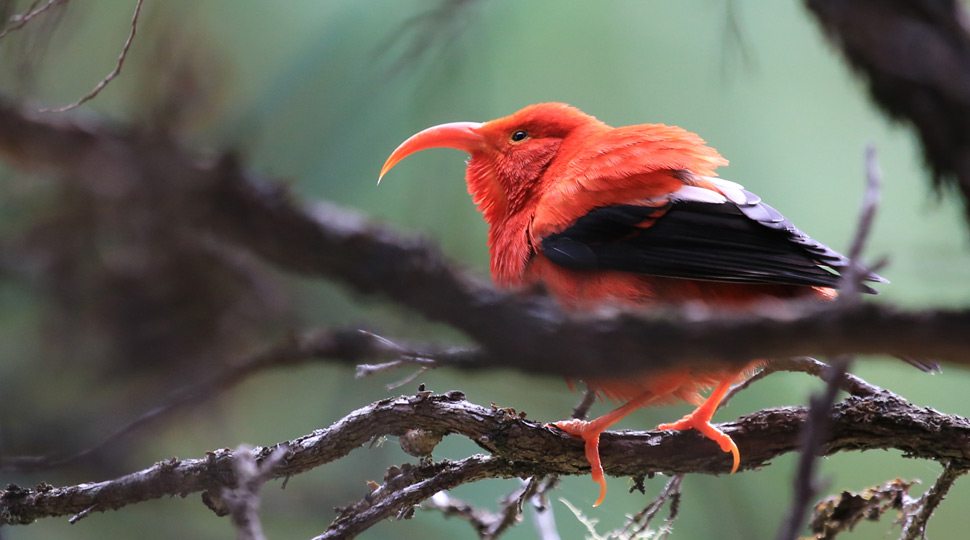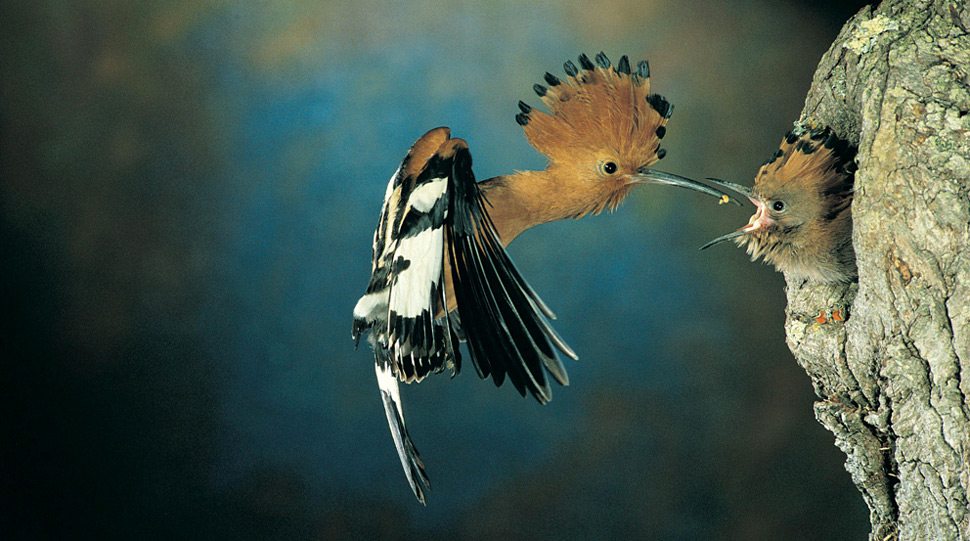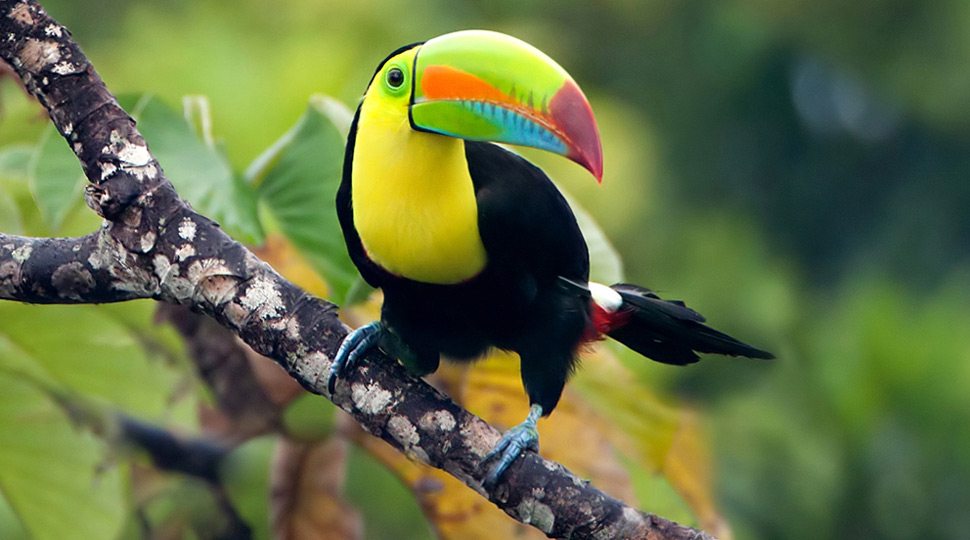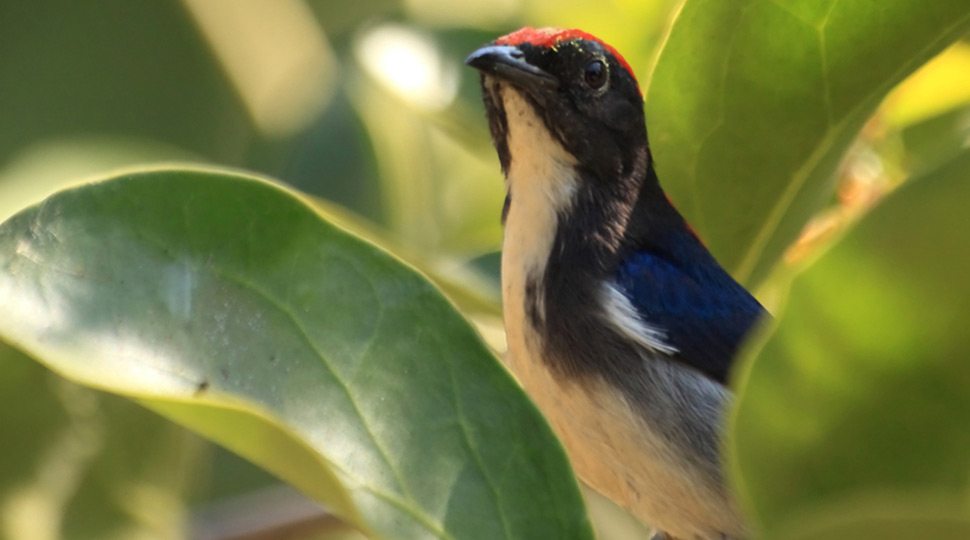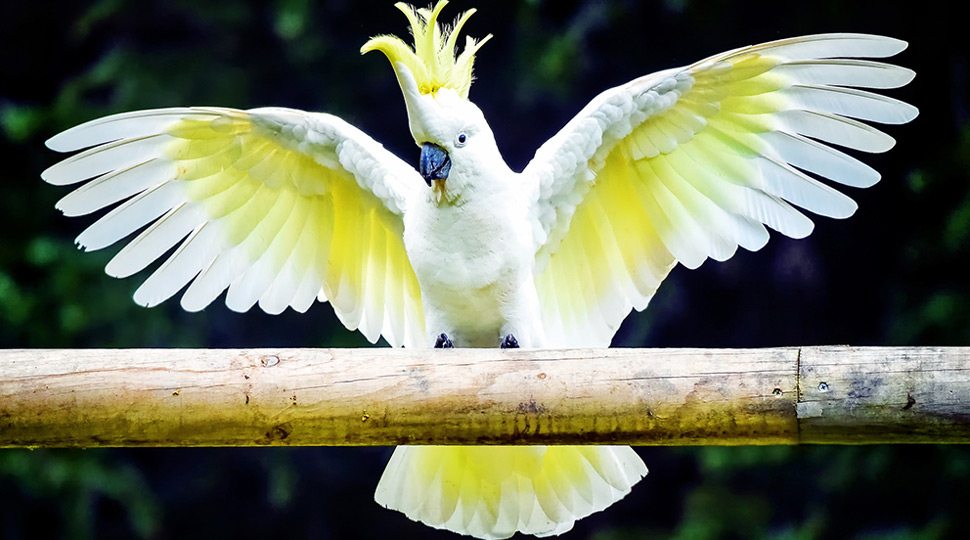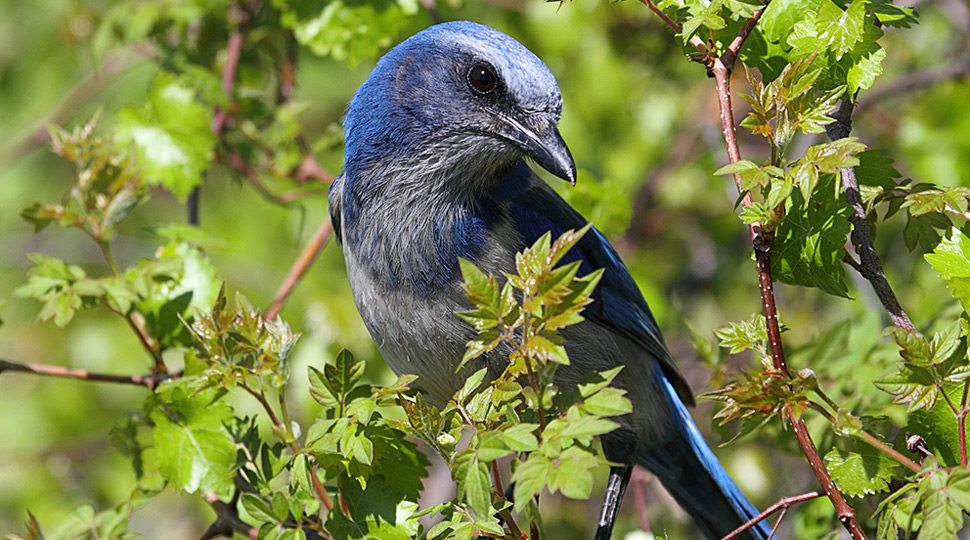Though raised on the South Plains of Texas, where cotton fields are filled with cottontail rabbits and the most dangerous predator is a rattlesnake, I’ve put down roots in Paris, where French waiters and bureaucracy remain my most formidable adversaries. Serengeti National Park couldn’t be further from my routine, but that’s exactly what I craved.
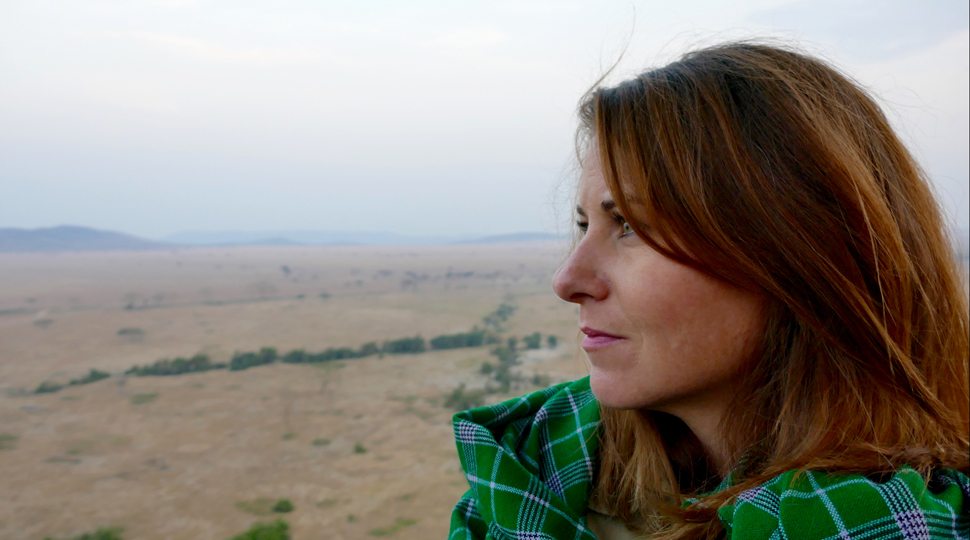
Africa felt like an exotic dream as I stared out at its Great Plains.
Texas is a world away from Tanzania, but the flight from Kilimanjaro seemed familiar as we passed over the Serengeti’s vast, dry plains. It was August, and I’d arrived during one of the dry periods when the Serengeti is hot, much of the flora is dead or on the verge, and controlled burns light up the night’s onyx horizon, filling the air with a haze reminiscent of an old sepia photo.
Flying in among the clouds, though, Africa still felt like an exotic dream.
The striking of the wheels on the rust-coloured dirt runway jolted me into reality. Eyes wide, I was ready to absorb every experience the Serengeti had to offer.
Jambo! Greeting the locals
My first glimpse of the Maasai came upon arrival to Four Seasons Safari Lodge Serengeti. Visually, I was fascinated with them – men draped in red-and-blue-chequered fabric, wearing shoes made from motorcycle tires, with rows of beaded jewellery on their arms and spears at their sides.
These Maasai, some with earlobes stretched and elaborate scarring on their skin, were the real deal.
They weren’t actors hired to play roles for tourists. These Maasai, some with earlobes stretched and elaborate scarring on their skin, were the real deal.
“Jambo!” they said as they took my luggage. This Swahili word for “hello” would be part of my Serengeti soundtrack, along with zebras barking and elephants trumpeting.
Descendants of a nomadic tribe originating in Kenya, the Maasai now graze their livestock in the Ngorongoro Conservation Area. Before they marry, have children and achieve warrior status, Maasai men must go through several rites of passage. This once included lion hunting, when spear and shield separated an aspiring warrior from the Serengeti’s most feared predator. Today, it’s traditions such as the adumu dance that are still observed.
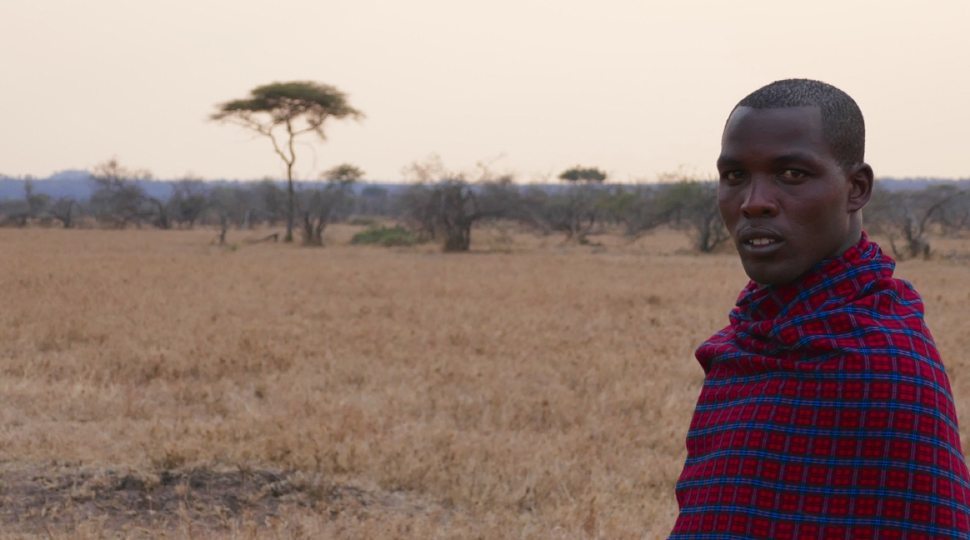
At the Lodge’s Boma Grill, dinner was preceded by a performance of the traditional adumu dance.
Athletic, rhythmic and symbolic, I watched this exhilarating dance at the Lodge’s Boma Grill. During adumu, Maasai men gather in a circle, chanting. Taking turns, young warriors move to the centre of the circle. With arms tight against the body and heels never touching the ground, they spring up and down, with the best and highest jumpers earning the admiration of the crowd.
Into the wild: Game drives in the Serengeti
The next morning, with the sun peeking over the Lodge, I embarked on my first of two game drives into the Serengeti.
As we rode through the plains, suddenly my guide, Priscus, stopped the sand-coloured Land Cruiser; silence and an early-morning chill filled the air. A seasoned guide and naturalist, Priscus had his eyes on a small group of Grant’s gazelles – Serengeti’s largest antelope.
Here, wildlife and those who observe it remain in a constant state of awareness.
Rather than grazing, they were frozen. There was a threat, and they could sense it. Priscus followed the gazelles’ line of sight, and in a matter of seconds, we spotted a hyena, jackals and vultures. All scavengers. There was a fresh kill, which meant a leopard, cheetah or pride of lions wouldn’t be far.
Here, wildlife and those who observe it remain in a constant state of awareness. Understanding the behaviour of one animal spills over into the behaviour of another. An entire scenario is can be unravelled from the pricked ears of an antelope.
Tap or click a photo to launch slideshow
A herd of elephants drink from the Lodge’s watering hole, only metres from the infinity pool.
A lioness stands out from the pride.
These zebras cool off in the watering hole today, but in late November and December, 200,000 of them will embark on the Great Migration – a 1,000-kilometre (620-mile) journey across the plains of the Serengeti.
A baboon observes the action from a safe perch.
The Retina Hippo Pool, located in the northwest part of the Park, is home to no fewer than 100 of these “river horses.”
A hyena blends into the burnt grass.
The Land Cruisers the Lodge uses for game drives feature open hatch roofs, ideal for viewing wildlife.
Also spotted frequently at the Lodge’s watering hole: herds of Grant’s gazelles.
At one point during the drive, just 10 feet separated me from a male lion, two females and a cub, who all sat in the shadow of one of the safari vehicles. Not even an engine turning over seemed to faze them.
Afternoon in the Serengeti is different from any other time of day. Nocturnal hunters are resting, allowing giraffes and other herbivores in search of shade, water and grass to let down their guard ever so slightly.
From the Big Five (African elephant, black rhinoceros, lion, leopard and African buffalo) to the Little Five (ant lion, rhino beetle, buffalo weaver, leopard tortoise and elephant shrew) and every living thing in between, there is synergy within the Serengeti.
In the footsteps of lions, zebras and elephants: A walking safari
A couple of hours before sunset, I was reunited with the Lodge’s naturalist and guide, Priscus. Along with Priscus, two spear-wielding Maasai warriors and two rifle-toting park rangers would accompany me on a walking safari into the Park’s plains. Vehicles in the Serengeti are limited to roads, so smaller details such as the flora, hyena tracks, 3-foot-high termite mounds and lion ant dens are easily missed.
We moved single file along a beaten dirt path through the open plains.
There was no way our presence would go unnoticed.
“Some animals walk on a trail, but not lions,” I was told. “If you see one fresh lion footprint then you better look around, because there are probably more. Look for bush, because they’re probably in the shade.” It was about an hour from sundown, and a chill ran down my spine at the thought of the hungry nocturnal hunters.
As bipedal creatures, humans are strange in the Serengeti. There was no way our presence would go unnoticed. “Elephants and buffalo are very strong, but they’re afraid of us,” Priscus said. “They don’t know how strong we are.” In the distance, a herd of 40 buffalo devoured their dry-grass dinner, though acutely aware of our group. These aggressive horned bovines would leave us alone as long as we stayed in the neutral zone.
With the Serengeti sun dipping below the horizon, the sky was awash with gold, followed by orange and red. We continued walking, with one of the armed rangers leading the way: “Do you hear the zebras barking? That’s the thing about walking, you can hear the sound of nature without the grrrrr of the Land Cruiser.”
Soaring above the Serengeti: An aerial safari
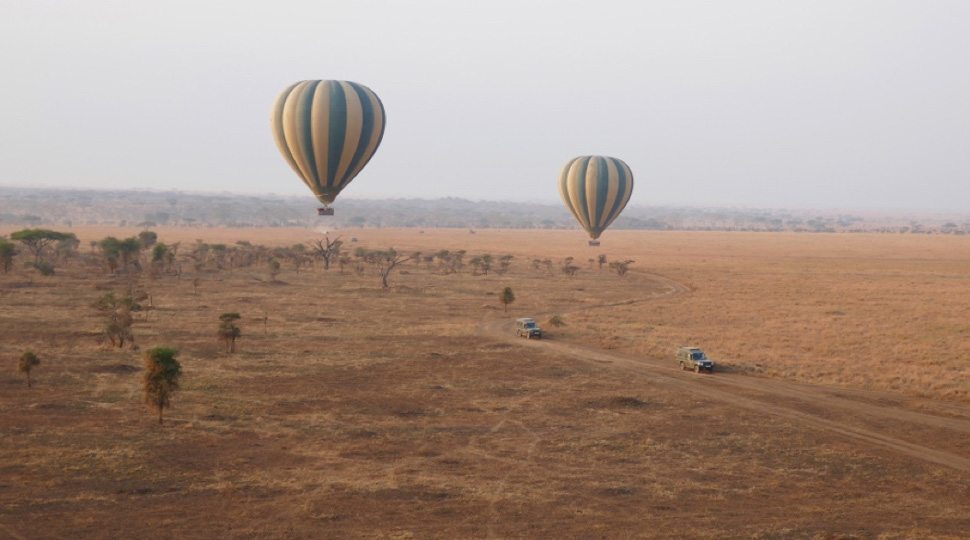
My last morning in the Serengeti was an early one, and I gleefully sprang from bed well before the sun. After an intimidatingly close look at the life of predator and prey, by car and on foot, it was time to take to the skies in a hot-air balloon.
The scorched plains passed below like an aerial scene from The African Queen. The feeling of weightlessness and the sound of silence were worth the 4:30 am departure from the Lodge. Mimicking the colours of the Serengeti, the green and gold balloon effortlessly floated low over the rugged terrain. Dawn was breaking, signalling the antelopes, zebras and warthogs to begin eating. Hippos returned to their muddy pools, and lions savoured the previous night’s kill.
The captain fired up the burner, enabling the 16-passenger balloon to climb higher. We soared alongside hawks and eagles, spotting the nests of African white-backed vultures. I literally had a bird’s-eye view of the Serengeti. The hour-long flight passed in seconds.
Despite the captain’s smooth landing, my feet were still off the ground – I was drunk with euphoria. A seemingly permanent smile on my face, I gathered with the other passengers for ceremonial Champagne and a traditional English-style brush breakfast.
I couldn’t have scripted a better ending to my Serengeti story.
YOUR JOURNEY BEGINS HERE
Soar through the Serengeti on your own safari.
